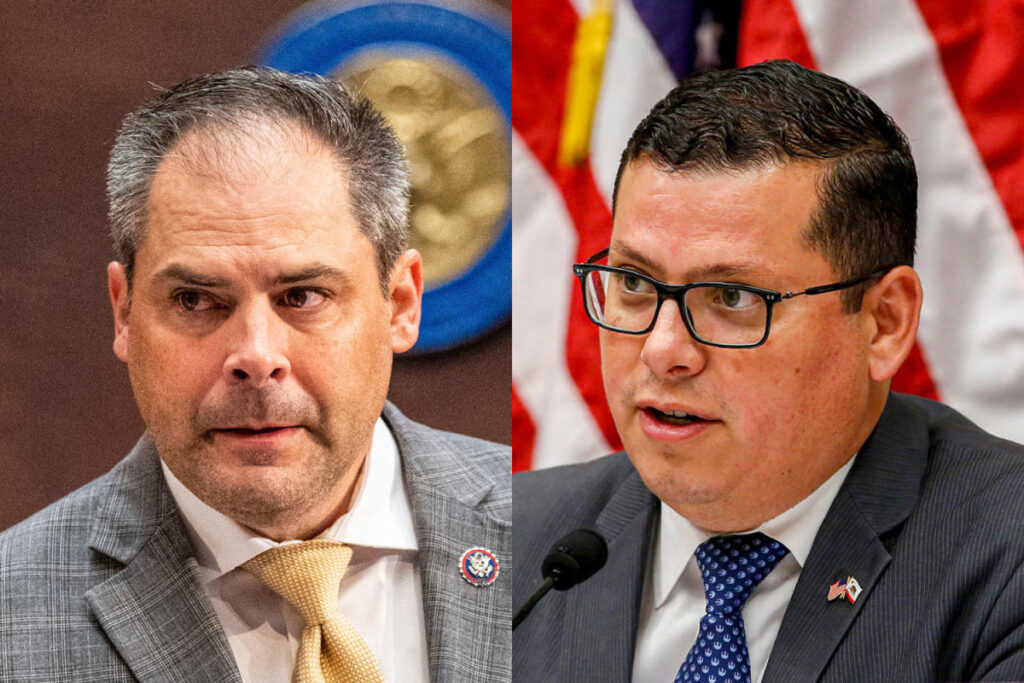The evolving political landscape for Latino voters is exemplified through two distinctive House candidates in California: Democrat Rudy Salas and Republican Mike Garcia. These candidates represent diverging ideological perspectives in a constituency that has historically leaned Democratic but is now experiencing a shift. Salas, vying to become the first Latino elected to Congress from California’s Central Valley, is focused on issues like immigration, affordable healthcare, and education reform. In contrast, Garcia, aiming for another term in northern Los Angeles, emphasizes conservative values such as spending control and security, seeking to resonate with a diverse voter base that includes a significant number of Latinos. As California’s Latino population continues to rise, their role in determining the outcome of closely contested elections becomes increasingly significant in the national political discourse.
In a competitive environment marked by the Republican control of the House, Democrats are tasked with flipping seats to regain dominance. Salas and Garcia’s races are pivotal in this calculus, with California identified as a crucial battleground. Cook Political Report has highlighted five California congressional races as toss-ups, emphasizing the heightened stakes involved. Salas is running against GOP incumbent David Valadao in District 22, while Garcia faces a challenge from Democrat George Whitesides in District 27. The outcome in these districts will significantly affect the balance of power in the House, with Salas representing a vision of progressivism that resonates with the evolving attitudes of Latino voters, who are crucial to the Democratic strategy.
Salas’s campaign strategy focuses on connecting with voters through shared experiences, particularly his background in farm work. He seeks to highlight the importance of the Latino vote by engaging in grassroots outreach, emphasizing the need for higher turnout among Latino voters. Their historical participation rates have raised concerns among Democrats, and Salas is particularly aware of this dynamic. By discussing issues like the American Dream, affordable homes, and the challenges many face in their daily lives, Salas hopes to galvanize support and mobilize the community to the polls. His moderate stance, sometimes critical of his party’s leadership, aims to bridge the gap between Latino voters’ needs and broader Democratic objectives.
Conversely, Valadao presents a complex persona in the race, emphasizing his stances on local issues like water resource management. His unique background—being of Portuguese descent rather than Latino—presents a challenge in a district where many misconstrue his identity. Valadao’s political history is marked by moments of independence from GOP leadership, notably being one of the few Republicans to support impeachment proceedings against Trump. His nuanced position on immigration resonates with some constituents, yet questions remain about his alignment with broader Republican policies that may alienate potential Latino supporters.
In District 27, Garcia’s approach embodies a different philosophy, asserting that being Latino doesn’t necessitate a distinct political stance. He frames his engagement with constituents as one grounded in shared American identity. Garcia’s campaign addresses crime and safety, targeting drug-related issues in Latino communities, while also appealing to conservative values. His endorsement by Trump reflects his alignment with traditional Republican policies, contrasting sharply with Whitesides, who is making focused efforts to engage Latino voters through bilingual outreach and prioritizing issues like healthcare and support for small businesses. Whitesides’ strategy emphasizes an accessible, inclusive campaign that seeks to unite various demographic groups under common societal goals.
Public sentiment and polling data underscore the shifting allegiance of Latino voters, who are starting to display signs of electoral unpredictability, particularly evident in recent polls. While historically Democratic, the Latino vote’s nuances highlight varying priorities and perspectives across districts. Notably, a recent poll indicated that while Salas holds a strong advantage among Latino voters in District 22, closely contested numbers in District 27 signal a potential battleground narrative. The growing complexity of Latino voter engagement emphasizes the importance of tailored outreach strategies while also reflecting broader national trends where Latino feedback increasingly shapes the political landscape.
As the election approaches, the turnout rates of Latinos will play a critical role in determining the outcomes in these districts. With the potential for high voter engagement inspired by a competitive race between key political figures, confirming support for Democratic candidates hinges on mobilizing the Latino electorate. California’s political dynamics, marked by a considerable segment of “no party preference” voters, could significantly affect the results as candidates adapt their strategies to resonate with this uncertain voter segment. Overall, the upcoming elections embody the critical intersection of ethnicity, ideology, and electoral engagement as Latino voting blocks emerge as decisive factors shaping the future of Congressional control.

